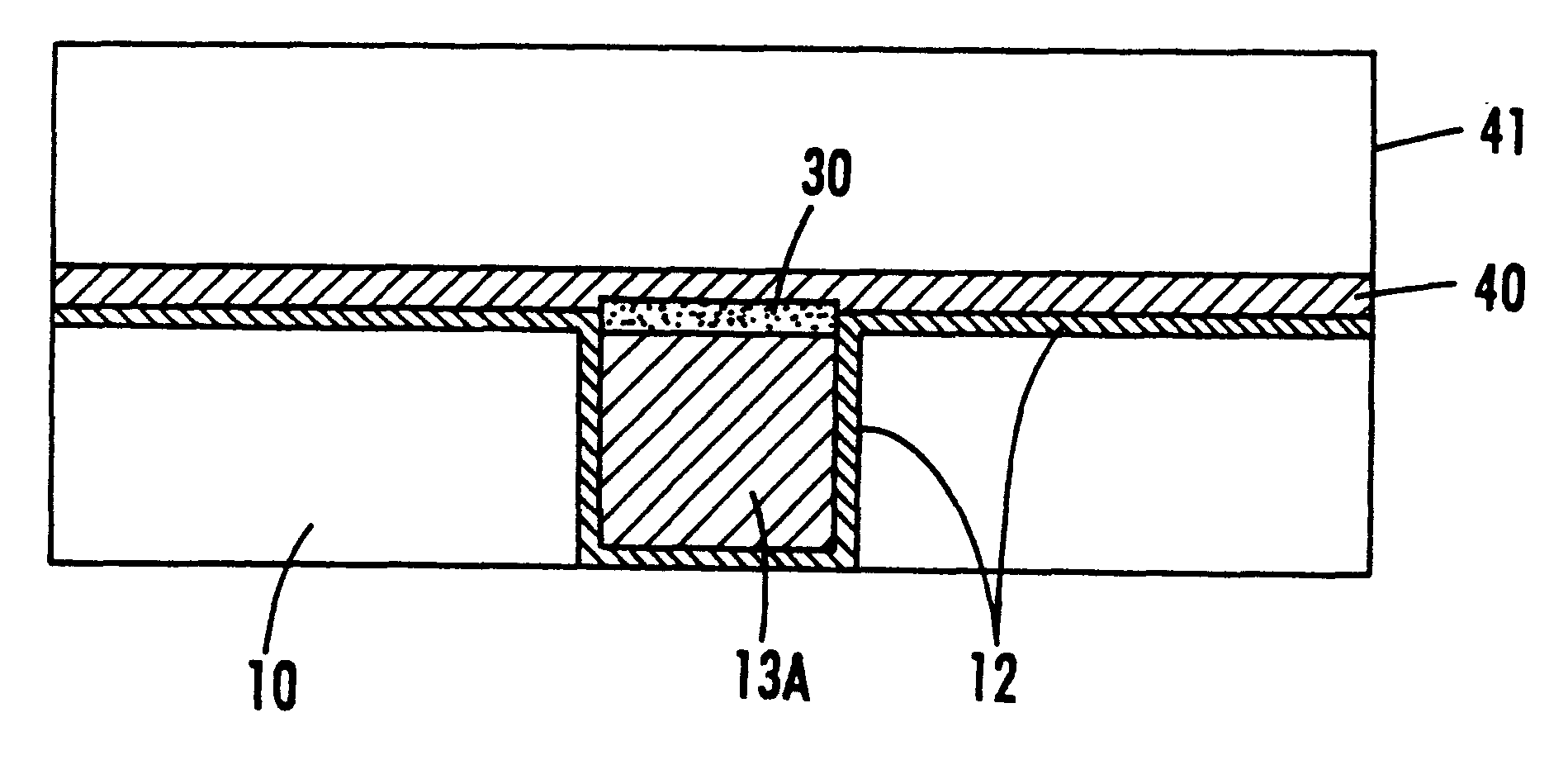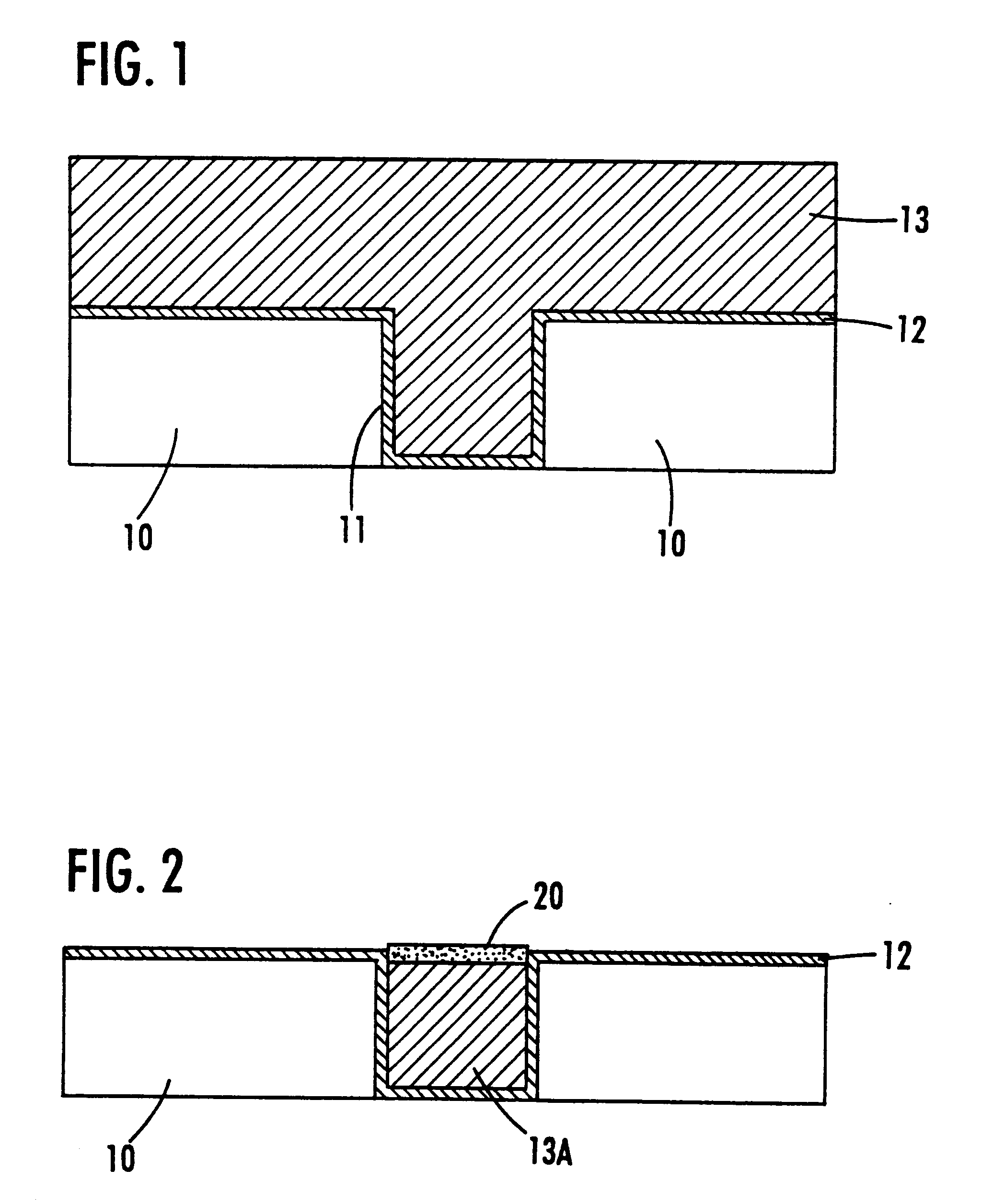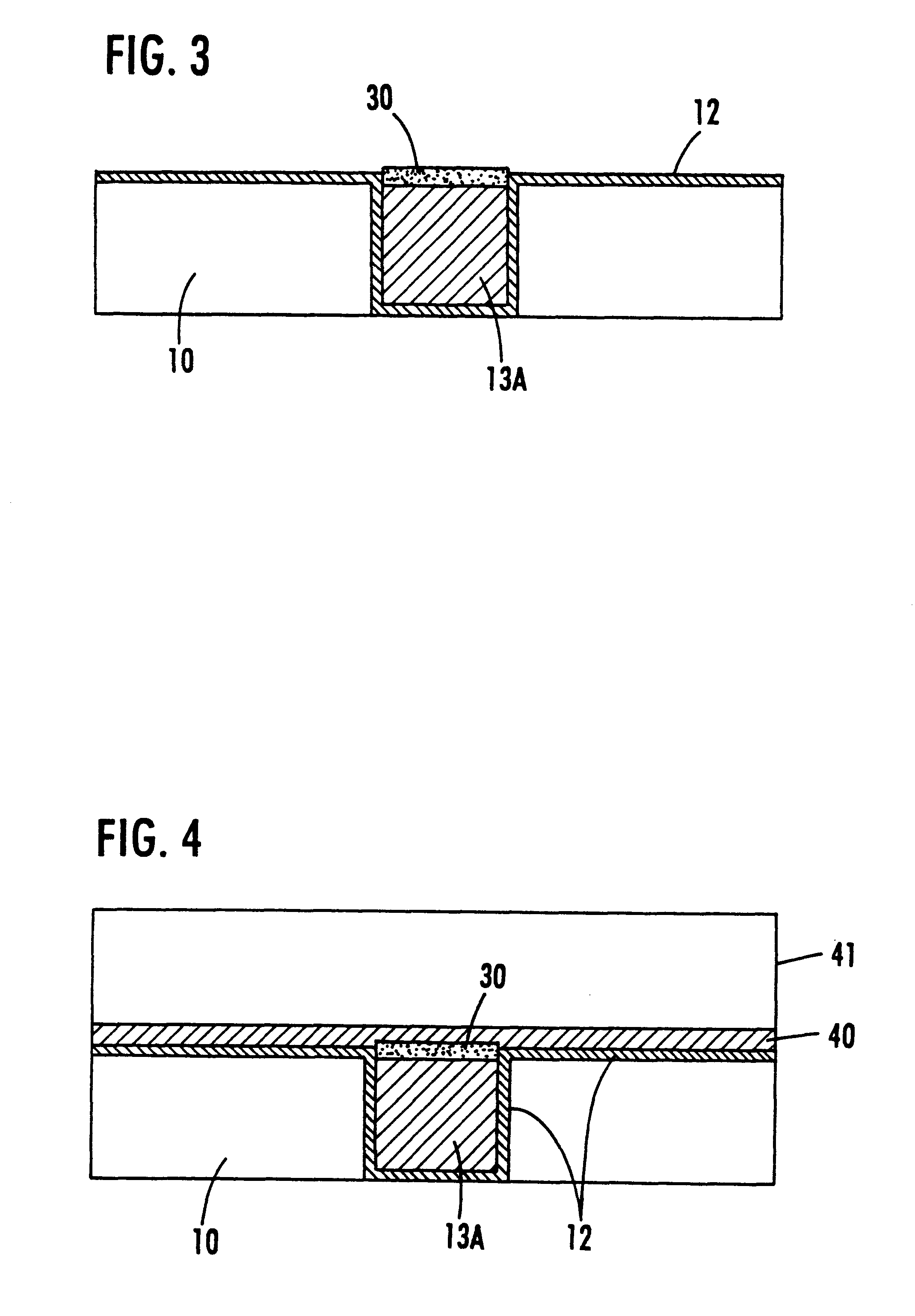Method of forming reliable copper interconnects
- Summary
- Abstract
- Description
- Claims
- Application Information
AI Technical Summary
Problems solved by technology
Method used
Image
Examples
Embodiment Construction
The present invention addresses and solves problems attendant upon capping Cu and / or Cu alloy interconnect members, as with a capping layer of silicon nitride. The present invention advantageously enables increased adhesion of a capping layer, such as silicon nitride, to a Cu or Cu alloy interconnect member, thereby preventing copper diffusion and enhancing electromigration resistance.
As design rules are scaled down into the deep submicron range, e.g., about 0.18 microns and under, the reliability of encapsulated Cu and / or Cu alloy interconnect members becomes increasingly significant. It was found that conventional practices in forming a Cu or Cu alloy interconnect member in a damascene opening results in the formation of a thin copper oxide surface film, believed to comprise a mixture of CuO and Cu.sub.2 O. It is believed that such a thin copper oxide surface film forms during CMP. The thin copper oxide surface film is porous and brittle in nature. The presence of such a thin copp...
PUM
 Login to View More
Login to View More Abstract
Description
Claims
Application Information
 Login to View More
Login to View More - R&D
- Intellectual Property
- Life Sciences
- Materials
- Tech Scout
- Unparalleled Data Quality
- Higher Quality Content
- 60% Fewer Hallucinations
Browse by: Latest US Patents, China's latest patents, Technical Efficacy Thesaurus, Application Domain, Technology Topic, Popular Technical Reports.
© 2025 PatSnap. All rights reserved.Legal|Privacy policy|Modern Slavery Act Transparency Statement|Sitemap|About US| Contact US: help@patsnap.com



